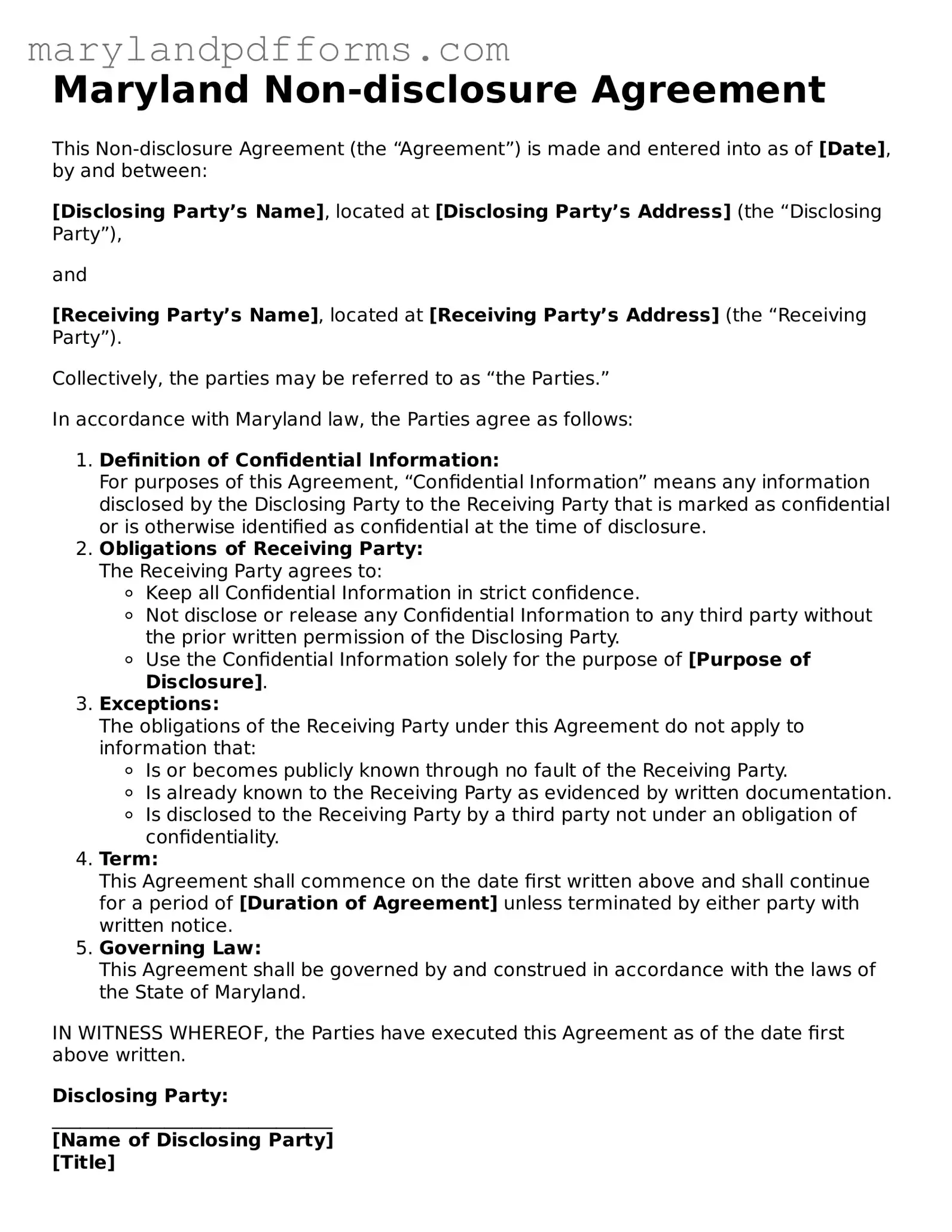What is a Non-disclosure Agreement (NDA) in Maryland?
A Non-disclosure Agreement (NDA) is a legally binding contract that protects confidential information shared between parties. In Maryland, this agreement ensures that sensitive information, such as trade secrets or proprietary data, remains confidential. It can be used in various contexts, including business partnerships, employment relationships, and collaborations.
Why should I use an NDA?
Using an NDA is crucial for safeguarding your business interests. Here are a few reasons to consider:
-
Protection of Sensitive Information:
An NDA helps prevent the unauthorized sharing of confidential information.
-
Legal Recourse:
If a party breaches the agreement, you have legal grounds to seek damages.
-
Trust Building:
An NDA can foster trust between parties, encouraging open communication without fear of information leaks.
What should be included in a Maryland NDA?
A comprehensive NDA typically includes the following elements:
-
Definition of Confidential Information:
Clearly outline what information is considered confidential.
-
Obligations of the Receiving Party:
Specify the responsibilities of the party receiving the information.
-
Duration of Confidentiality:
Indicate how long the information must remain confidential.
-
Permitted Disclosures:
Identify any circumstances under which the information can be disclosed.
How long does an NDA last in Maryland?
The duration of an NDA can vary based on the agreement between the parties. Generally, the confidentiality obligations can last for a specified period, often ranging from two to five years. However, some information, like trade secrets, may require indefinite protection. It’s essential to clearly state the duration in the NDA to avoid confusion later on.
Can I modify a standard NDA template for my needs?
Yes, you can and should modify a standard NDA template to fit your specific situation. Customizing the agreement ensures that it accurately reflects the nature of the information being protected and the relationship between the parties involved. However, it’s advisable to consult with a legal professional to ensure that the modifications comply with Maryland law and adequately protect your interests.
What happens if someone breaches the NDA?
If a party breaches the NDA, the affected party may pursue legal action. This can include seeking monetary damages or injunctive relief to prevent further disclosure. The specific remedies available will depend on the terms outlined in the NDA and the nature of the breach. It’s important to document any violations and seek legal advice promptly to understand your options.
Is an NDA enforceable in Maryland?
Yes, an NDA is generally enforceable in Maryland, provided it meets certain legal requirements. The agreement must be clear, reasonable, and not overly broad in its restrictions. Courts will typically uphold NDAs that protect legitimate business interests while not infringing on an individual’s right to work or engage in business. To maximize enforceability, consider having the NDA reviewed by a legal expert.
